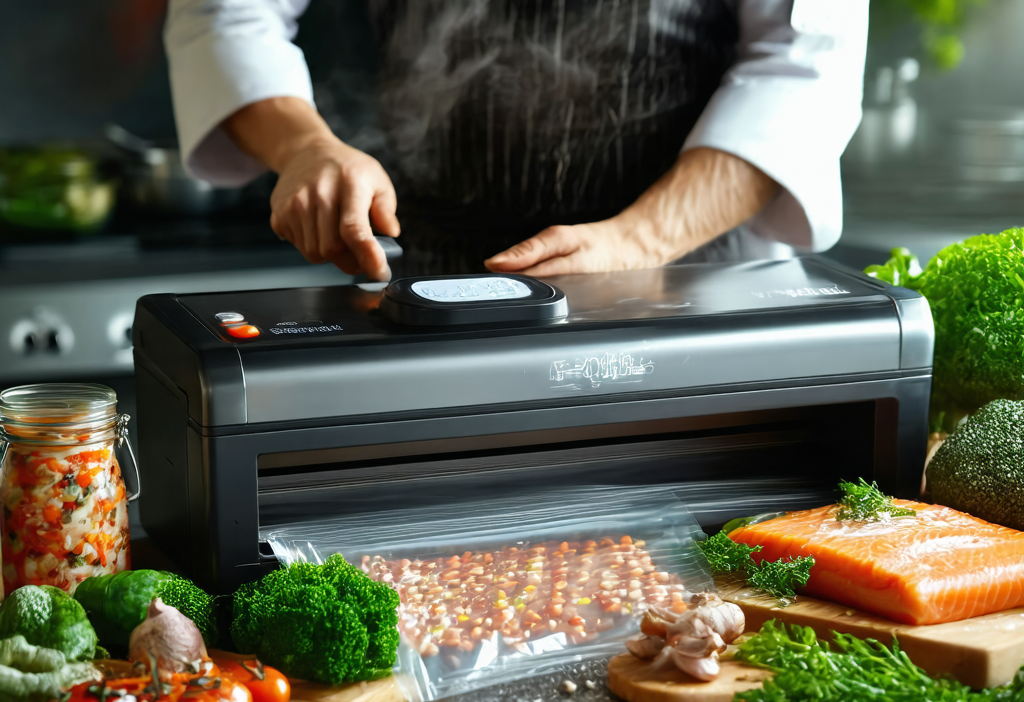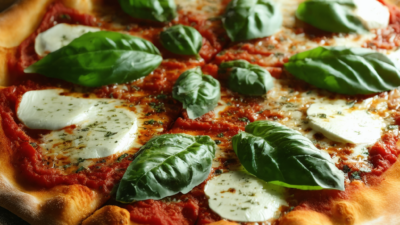Mastering the Art of Food Preservation in the Modern Age
In a world where convenience often overshadows tradition, food preservation has evolved into an art form that combines age-old wisdom with cutting-edge technology. Whether you’re a culinary enthusiast looking to extend the life of your harvest or a busy homemaker aiming to streamline meal prep, modern food preservation techniques offer solutions that are both practical and innovative.
Understanding the Basics: Why Preserve Food?
Before diving into the latest trends, it’s essential to grasp why preserving food matters. Beyond mere sustenance, food preservation is about celebrating the bounty of each season while ensuring you have nutritious meals year-round. It’s a nod to sustainability and a way to reduce waste in an increasingly eco-conscious world.
Traditional Methods Meet Modern Innovation
Let’s take a stroll down memory lane—or rather, through the annals of culinary history. Traditional methods like pickling, fermenting, and canning have been staples for centuries. But in today’s fast-paced world, these techniques are often enhanced with modern tools and scientific insights:
- Pickling: This ancient method involves immersing vegetables or fruits in a brine solution to inhibit bacterial growth. Modern twists include using specialized pickling salts and precise pH control to ensure safety and extend shelf life.
- Fermenting: From sauerkraut to kimchi, fermentation not only preserves food but also enhances its nutritional profile by introducing beneficial probiotics. Contemporary methods often utilize airtight containers with controlled oxygen levels to optimize the process.
- Canning: The age-old practice of canning is still widely used today, especially for fruits and tomatoes. Modern advancements include pressure canners that offer better temperature control, ensuring safer and longer-lasting results.
Embracing Modern Food Preservation Techniques
While traditional methods remain foundational, modern techniques have opened up new avenues of creativity and efficiency in food preservation. Here are some game-changers:
Sous Vide Preservation
This method involves vacuum sealing food in bags and cooking it at precise low temperatures. When used for preservation, sous vide can extend the shelf life of meats and fish by up to several months without compromising flavor or texture.
“Sous vide isn’t just for restaurants anymore—it’s a kitchen essential for preserving high-quality proteins at home.”
Freeze-Drying
Popular among outdoor enthusiasts and preppers, freeze-drying removes water from food through sublimation. The result is lightweight, shelf-stable items that retain up to 98% of their nutritional value. Ideal for hiking trips or emergency supplies.
Vacuum Sealing
Using a vacuum sealer removes oxygen from packaging, preventing oxidation and spoilage. This method works wonders for everything from herbs to meats, keeping them fresh up to 5 times longer than traditional storage methods.
“Investing in a quality vacuum sealer is one of the most impactful steps you can take toward reducing food waste.”
Navigating Tools and Equipment
To embark on your preservation journey, you’ll need the right tools. Here’s a quick rundown:
| Tool | Purpose |
|---|---|
| Vacuum Sealer | Removes oxygen to extend shelf life |
| Canning Set | Essential for preserving jams, pickles, and vegetables |
| Dehydrator | Dries fruits, meats, and herbs to preserve them naturally |
| Sous Vide Machine | Cooks and preserves food at precise temperatures |
Benefits of Modern Food Preservation
Beyond the obvious advantage of having a stocked pantry, modern preservation techniques offer numerous benefits:
- Sustainability: Reduces food waste and minimizes reliance on refrigeration.
- Nutritional Value: Many methods retain or even enhance the nutrient content of foods.
- Cost-Effective: Allows you to buy in bulk during sales and preserve for later use, saving money over time.
- Creative Freedom: Enables experimentation with unique flavor profiles and culinary traditions from around the world.
Tips for Successful Preservation
Whether you’re a novice or a seasoned pro, these tips will help you get the most out of your preservation efforts:
- Start Small: Begin with easy projects like pickling cucumbers or drying herbs before tackling more complex methods.
- Use High-Quality Ingredients: The better the starting material, the better the final product. Always use fresh, ripe ingredients for best results.
- Follow Safety Guidelines: Proper hygiene and following tested recipes are crucial to avoiding foodborne illness.
- Experiment and Innovate: Don’t be afraid to tweak recipes or combine methods to create something uniquely yours.
Common Challenges and How to Overcome Them
No matter how skilled you are, preservation can present challenges. Here’s how to tackle some of the most common issues:
| Challenge | Solution |
|---|---|
| Mold Growth | Ensure all equipment is sterilized and use proper sealing techniques. |
| Bitterness in Pickles | Use fresh, high-quality salt and avoid overcrowding jars. |
| Dry or Crispy Textures | Adjust dehydration times and consider using a humidification tray for softer results. |
The Future of Food Preservation
As technology continues to advance, so does the field of food preservation. Emerging trends include:
- Cryo-Preservation: Using extremely low temperatures to preserve foods with minimal impact on texture or flavor.
- Nano-Encapsulation: A technique that encapsulates nutrients in nano-sized particles to prevent spoilage and enhance shelf life.
- Smart Packaging: Packaging that monitors food quality and freshness in real-time, providing feedback to consumers.
“Preservation is not just about extending the life of your food—it’s about connecting with tradition, embracing creativity, and building resilience for the future.”
Final Thoughts
Modern food preservation techniques offer a wealth of opportunities to enhance your culinary skills, reduce waste, and enjoy delicious, nutrient-rich foods year-round. By starting with simple methods and gradually expanding your toolkit and knowledge, you can become a master of preservation in no time. So why wait? It’s time to dive into the fascinating world of food preservation and unlock a pantry full of possibilities!
Until next time, happy preserving!





